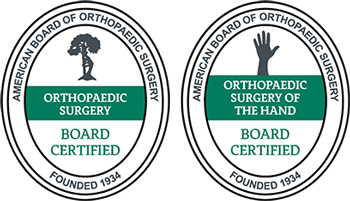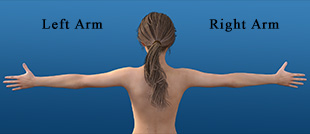Sports Injuries of Hand and Upper Extremity
Dr. John Knight has over 25 years of experience in the treatment of all sports injuries of the hand and upper extremity from elite athletes to the weekend warriors. As a sports hand doctor Dallas Fort Worth, Dr. Knight strives to return all athletes as quickly as possible to their sport as quickly as possible. If possible, as a sports hand doctor, Dr. Knight will cure you with conservative treatment. However, if sports hand surgery is necessary, he will usually perform minimally invasive surgery to minimize scarring which will allow a quicker recovery.
Contents
CYCLING ACCIDENTS
As bicycle riding or cycling has become more and more popular over the last decade after the international success of Lance Armstrong, so too has the number of emergency room visits with upper extremity injuries.
20% of injuries to the upper extremity involve fracture. The most common mechanisms were from being struck by a motor vehicle, falling from a bicycle or being struck by a bicycle.
Common injuries include wrist cartilage and ligament tears, hand fractures wrist fracture, wrist sprain, scaphoid factures,colles fracture, forearm fractures and elbow fractures.
The other injuries to the upper extremity occur from overuse or repetitive use. This occurs from prolonged grasping of the handlebars. This can lead to compressive neuropathies such as carpal tunnel syndrome, cubital tunnel syndrome, radial tunnel syndrome or ulnar tunnel syndrome. This can also lead to wear and tear on the tendons with resulting tendonitis such as de Quervain’s at the wrist and golfer’s elbow or tennis elbow .
Increased cyclist awareness and wearing protective gloves and of course helmets can help minimize injuries. Proper seat and handle bar alignment are important as well as frequent stretching and avoid prolonged riding without resting the upper extremity.
BOXING AND UFC / MMA INJURIES
Boxing and Mixed Martial Artists frequently sustain hand, wrist and elbow injuries. Injuries to the hand and wrist most frequently occur from improper punching or striking technique. This can cause a boxer fracture or various other hand fractures, It can also cause a ligament of cartilage tear in the wrist by striking with the wrist in a flexed position such as throwing a hook punch or upper cut. Additional injuries can occur to the wrist or elbow from grappling and excessive joint manipulation leading to a simple wrist sprain or a more major scaphoid fracture or colles fracture. Elbow fractures may occur or an ulnar collateral ligament injury at the elbow. Fingers can also become jammed leading to a swan neck deformity or boutonniere deformity. The thumb if jammed may sustain a Gamkeeper’s injury.
One of the most devastating injuries in boxing may lead to a tear of the joint capsule of the MCP joint or knuckle or the sagittal band that centralizes the extensor tendon over the knuckle. This is repairable but may lead to permanent soreness over the knuckle or soft knuckle precluding punching.
Proper technique, equipment and gloves, and proper taping are vitally important to holding up to the rigors of these sports.
SKIING/ SNOWBOARDING ACCIDENTS
In skiing, four major types of injuries occur: dislocated shoulder, fractured humerus, injured thumb, and injured wrists.
Skiers Thumb is very common. It happens as a ski pole is caught between the thumb and index finger levering the thumb joints. Also when a skier falls with a pole grasped in their hand they will open their hand and catch their full weight on their outstretched thumb tearing the ulnar collateral ligament at the MCP joint. This injury involves a sprain or rupture of the Ulnar Collateral Ligament of the thumb, Gamekeeper’s thumb.
In one study (Cl. J Sport Med.,2002,Nov;Matsumoto et al), The ratio of upper extremity injuries to all injury types was significantly higher in snowboarders. Shoulder dislocations accounted for 5.5% of all injuries in skiers but 71% of all dislocations. In comparison, 6.5% of snowboarders’ injuries were shoulder dislocations, representing 50% of all dislocations. It was noted that dislocation of the elbow joint was a more characteristic injury of snowboarders (30%) than of skiers (3%). The most frequently fractured site in skiers was the clavicle and in snowboarders, it was the wrist. The most frequently affected side of the snowboarders’ upper extremity was the left, with the exception of wrist fractures. With the exception of wrist fractures, the edge side that caused the accident was the opposite of the side that was injured. Most snowboarders did not have initial instruction from professional instructors (93%) and did not use protective equipment (87%).
Wrist guards for snowboarders and wrist/elbow attachments for ski poles are making wrist and thumb injuries less common.
MOTORCYCLE ACCIDENT INJURIES
Off-road motorcycling or motocross is one of the most popular sports activities practiced by millions of people in the world.
Injuries are most often caused by crashes – and preventing crashes is clearly hard to do without using tired cliches like ‘slow down’ or ‘ride within your limits’. However, there are more realistic ways to reduce the risk.
Going to the line without warming up properly is asking for trouble. If you’re not warmed up then the range of motion of joints is reduced and this will increase the chance of joint injury.
Riding when tired is another big cause of crashes. Fatigue greatly affects concentration but fatigue is part of racing and can’t always be avoided. Try and rest before the race as much as possible and take taking frequent breaks for drinks.
Upper extremities in most studies are the most common area injured. The left upper extremity is most commonly involved. Among the most common injuries in the popular sport of motocross are shoulder, elbow and wrist injuries. Other than bruises, most injuries are fractures followed by joint ligamentous injuries.
Wrist injuries include ligament and cartilage tears, various wrist fractures, scaphoid fractures and Colles fractures.
The first thing to do when injured is follow the simple RICE principle – Rest immediately, Ice the injured site, put Compression onto the area with strapping and Elevate. This will help with pain and swelling and if done promptly will help reduce injury time.
Try to see a professional as soon as possible as quick diagnosis is one of the best ways to treat an injury correctly. Ignoring it may be detrimental and could lengthen recovery time.
During the recovery, keeping active while protecting the injured limb or joint will keep your cardio fitness good, motivation up and reduce the worry that the hard work before the injury was wasted. Cardio fitness can continue as well as core and lower body work in most cases during recovery.
BASKETBALL INJURIES
Developed in 1891 by Canadian James Naismith, basketball is now one of the most popular sports for around the world. Basketball injuries are among the most common of all sports injuries causing up to and 25% of all sports injuries. Kobe Bryant is the most well known player with many different hand injuries over the past few years. As many as 1 in 4 basketball players eventually experience some form of injury. Even though basketball is a contact sport, many injuries happen without contact. In recreational players, noncontact injuries account for the most injuries , whereas elite athletes have a higher incidence of contact injuries although noncontact injuries are still common. Proper biomechanics and conditioning probably accounts for their lower incidence of noncontact injuries. Sprains and strains are the most common types of basketball injuries, accounting for the majority of injuries. Other common injuries include soft tissue injuries and lacerations and fractures and dislocations. Less common injuries include overuse syndromes.
Hand and wrist injuries are among the most common of all basketball injuries, accounting for up to 10% of injuries.
Wrist injuries usually occur from a fall on an outstretched wrist after landing the wrong way. These injuries can involve a simple wrist sprain or more severe injuries such as a ligament or cartilage tears, scaphoid fractures, other wrist fractures, or Colles fractures.
One of the most common hand is a Finger Jam, which is a term most commonly referring to an injury to the interphalangeal (PIP or middle) joint of the finger after rapid axial loading, as when a basketball hits an outstretched finger. This can lead to a dislocation, an isolated ligament tear, a finger or hand fracture, or a tear in the extensor tendon leading to a Boutonniere deformity or Swan neck deformity or a tear of the flexor tendon (Jersey finger), or thumb ligament tears (Gamekeeper injury).
FOOTBALL INJURIES
According to previous studies, every year in the United States, there are between 600,000 and 1.2 million injuries in high school and college football. About 30 percent of these injuries affect the hands or upper extremity of the player.
The most common hand injury was the metacarpal fracture, or broken finger. In addition to hand fractures, the thumb ray injuries such as a Gamekeeper ligament injury of the thumb or jamming injuries to the fingers leading to tears in tendons or ligaments with resulting Boutonniere deformities or Swan neck deformities, Jersey fingers, or mallet fingers.
The fall on a harder artificial turf surface have also led to an increasing incidence of wrist injuries with wrist sprains, wrist ligament or cartilage tears, wrist fractures, scaphoid fractures, Colles fractures. Also common football injuries include elbow fractures and dislocations.
Fractures of the finger or thumb have caused the most time out of football. The most common cause of fractures was tackling an opposing player while blocking was the second most common. Defensive players are at highest risk of these injuries. These include safeties and cornerbacks, as secondary positions. The fewest injuries occurred among tight ends and quarterbacks.
While prevention of the more severe knee and neck injuries have been the focus, prevention needs to also focus on these lesser with better safety equipment.
How can Dr. Knight help you with Sports Injuries of Hand and Upper Extremity?
Dr. Knight welcomes you to any of our Dallas Fort-Worth accessible hand and wrist offices. Dr. Knight is an accomplished hand specialist. Come to our Southlake office or Dallas office today and bring life back to your hands.
Disclaimer
HandAndWristInstitute.com does not offer medical advice. The information presented here is offered for informational purposes only. Read Disclaimer

























